Intro to Parent Models
Images of Healthy Parent Models
Today we begin a new series on images of healthy parent models. It’s no real stretch to suggest that how we were parented influences who we become. From Freud to now, psychology has been dominated in large part by the reconciliation of childhood experiences with presenting problems in adult life. After all, is it not the inner child we hail supreme in psychotherapy? And why? Of course, these formative years mold the ego through modeling of the environment. Naturally, mother and father provide our first real images of how one engaged with emotion, relationships, responsibilities, beliefs, and life itself. To one degree or another, our work at Barn Life is about bringing out of these models. We explore how we have taken them into adult life: what worked, what didn’t, what motivates, and what destroys.
Substantiating Our Best Selves
From wounding to winning, the parent models we had present to us our best efforts and our worst limitation. If, for example, we rely too heavily on our strengths we may never know the meaning of failure. As Winnicott once wrote, we would be best set up for a healthy individual life with a good enough mother and a good enough father… too good and we never find our interiority, too bad and we find only the survivalist within. Adopted in childhood, these external figures formed how we find motivation, nurture, and relationships to our own goals both as the clinician and the client. The resources we acquire to substantiate our best selves as we will explore rely heavily on the images we hold of how to self parent.
Archetypal Images of Masculine and Feminine Figures
There is a problem with simply processing what was formative from our parents. Specifically, we may never reconcile these images to the whole. Without corrective experiences of a healthier nature, we battle out the same inadequacies of our ancestors. In this effort, I want to use this series to explore universal images of masculinity and femininity in order to open up the conversation about the inner parent model. We will explore the missing links of the psyche in what may be underdeveloped and what may be over-relied upon. In an effort to bring us closer to the organizing principles of mothering and fathering we will be spending the next several weeks exploring archetypal images of masculine and feminine figures in myth and fairytale. These figures help us to better understand the nature of our own unique experiences. Additionally, we find new voices of motivation, nurture, acceptance, and effort.
A Deeper World of Exploration
For our first week, I want to draw special attention to the way we draw on our learned models. How do we confront obstacles? Conflict? Inadequacy? Failure? Stress? What beliefs do we hold about what we deserve? As we will see in coming weeks these structures resemble the personified images of mythic and fairytale figures. These learned models are doorways to a deeper world of exploration. With the intention of an expanding imaginal life, we will work to make more conscious who is among us as the voice of father and mother inside and out and who we might long to meet in the pantheon











